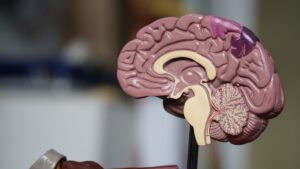Seizures can be a terrifying experience, both for the person experiencing the seizure and for those witnessing it. A seizure occurs when there is abnormal electrical activity in the brain, which can cause changes in behavior, movements, or consciousness. Seizures can arise from numerous factors, such as epilepsy, traumatic brain injuries, infections of the brain, and specific medical conditions. The good news is that there are multiple treatment alternatives available to manage seizures.
Medication

The most common treatment for seizures is medication. Antiepileptic drugs (AEDs) are the primary type of seizure medication used to treat epilepsy, which is a neurological disorder that causes recurrent seizures. A variety of antiepileptic drugs (AEDs) are available, and the selection of a specific medication depends on factors such as the type of seizures an individual is experiencing, their age, and other relevant considerations.
It is essential to work closely with a healthcare provider to find the proper medication and dosage for your specific needs. In some cases, a combination of drugs may be necessary to control seizures effectively.
Lifestyle Changes

In addition to medication, lifestyle changes can also play a crucial role in managing seizures. For example, getting enough sleep, managing stress, and avoiding triggers such as flashing lights can help reduce the frequency and severity of seizures. Some people with epilepsy may also benefit from following a ketogenic diet, which is a high-fat, low-carbohydrate diet that has been shown to help control seizures in some cases.
Surgery

For some people, medication and lifestyle changes may not be enough to control their seizures. In these cases, surgery may be an option. Several different types of surgery can be used to treat seizures, including:
- Resective surgery: This involves removing the area of the brain where the seizures originate.
- Lesionectomy: This involves removing a lesion or tumor that is causing the seizures.
- Corpus callosotomy: This involves cutting the nerve fibers that connect the two hemispheres of the brain to prevent seizures from spreading.
- Hemispherectomy: This involves removing one hemisphere of the brain.
Surgery is typically only considered when seizures are severe and have not responded to other treatments. It is essential to discuss the risks and benefits of surgery with a healthcare provider before making a decision.
Alternative Treatments

In addition to traditional treatments, several alternative treatments may be helpful for some people with seizures. These include:
- Vagus nerve stimulation: This involves implanting a device that sends electrical signals to the brain to help prevent seizures.
- Deep brain stimulation: This involves implanting electrodes in the brain to send electrical signals that can help control seizures.
- Responsive neurostimulation: This involves implanting a device that detects abnormal brain activity and sends electrical signals to stop seizures before they start.
Conclusion
There are several treatment options available for seizures, including medication, lifestyle changes, surgery, and alternative treatments. The choice of treatment will depend on the type and severity of seizures, as well as individual factors such as age and overall health. It is important to work closely with a healthcare provider to develop a comprehensive treatment plan that meets your specific needs. With the proper treatment, most people with seizures can lead normal, healthy lives.
More From LWOS Life
Make sure to stay tuned to LWOS Life for more on this and other stories from around the world of entertainment, culture, and more, as they develop. You can always count on LWOS Life to be on top of the major news in the world of entertainment; whilst also providing you with editorials on everything from beer to movie reviews.
Featured Image Credit: freepik

